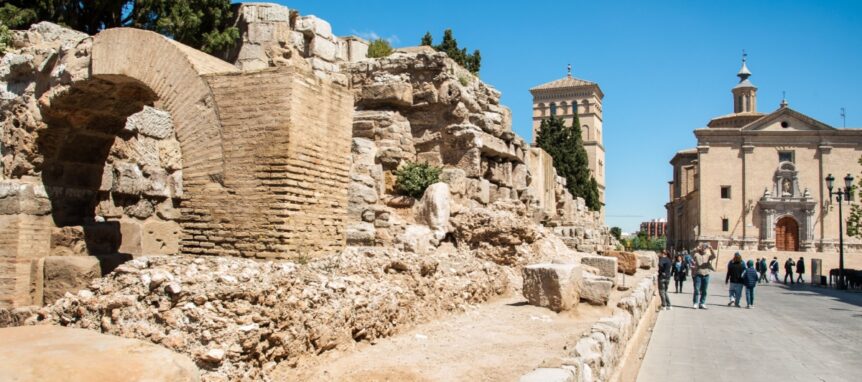Masonry has stood as a testament to human ingenuity for thousands of years. From the earliest mud bricks of ancient Mesopotamia to the intricately carved stone cathedrals of Europe, the craft of masonry has evolved dramatically in both technique and application. Understanding how masonry techniques have changed over time helps illustrate not only our advancements in construction but also our ability to preserve culture, adapt to environmental needs, and build structures that endure.
Ancient Origins: Function Meets Innovation
The story of masonry begins with some of humanity’s earliest permanent structures. In Mesopotamia, sun-dried mud bricks were shaped by hand and left to harden in the sun. These were practical for the arid climate and offered a scalable method for building cities. Around the same time, in ancient Egypt, skilled laborers carved massive limestone blocks for the pyramids using copper tools and primitive levers—techniques that would lay the foundation for future stone construction.
Greek and Roman civilizations took masonry to new heights by incorporating mortar, arches, and domes into their architecture. Roman concrete, or opus caementicium, became a hallmark of durability and ingenuity. The use of stone and brick, paired with strong binding agents, enabled them to construct vast networks of aqueducts, temples, and amphitheaters, some of which still stand today.
Medieval Mastery: Aesthetic Meets Structure
During the medieval period, masonry became deeply intertwined with artistic expression and religious symbolism. The Gothic cathedrals of Europe are iconic examples, with their pointed arches, flying buttresses, and stained-glass windows. Stone masons of the Middle Ages were among the most respected craftsmen of their time, trained in specialized guilds that preserved their techniques through oral tradition and apprenticeship.
These masons learned to calculate complex loads and pressure points—long before modern engineering tools existed. They carefully selected stones based on durability and workability, often transporting them from distant quarries. The craftsmanship from this period emphasized both structural integrity and visual grandeur, resulting in structures that were not only functional but also works of art.
The Renaissance and Enlightenment: Science Joins the Craft
As the Renaissance unfolded, a renewed interest in mathematics and science began influencing masonry. Builders started to apply geometry and proportion more rigorously, designing buildings that balanced beauty with precision. With access to improved tools and a deeper understanding of materials, masons of the Enlightenment era could construct more ambitious projects, such as domes, bridges, and civic buildings that still define many European cityscapes.
Brickwork gained new popularity during this time, especially in areas where natural stone was scarce. Kiln-fired bricks offered consistency in size and strength, and pattern-based masonry—such as Flemish and English bond—allowed for both structural reliability and decorative flair.
Industrial Age Advances: Speed and Standardization
The Industrial Revolution changed masonry forever. Mechanized production introduced mass-produced bricks and standardized mortar mixes, drastically reducing the time and labor needed for construction. Portland cement became the new norm, offering stronger and faster-setting mortar compared to lime-based mixes.
Steam-powered cutting tools and cranes made it easier to handle heavy stone, while steel reinforcements and concrete slabs began to be incorporated into masonry structures. As cities grew, brick became the material of choice for everything from rowhouses to industrial factories. This era emphasized efficiency, yet many buildings still retained intricate masonry details that celebrated the craft.
Modern Masonry: Merging Tradition with Technology
Today, masonry combines centuries-old techniques with modern innovation. Laser-leveling equipment, computer-aided design (CAD), and advanced sealants have expanded the capabilities of masons. Concrete blocks are now frequently used for structural components, while traditional brick and stone are applied as veneers for aesthetics and insulation.
Sustainable practices are increasingly important, with many masons choosing locally sourced materials and incorporating green building principles. Restoration work has also become a major part of the industry, as cities recognize the value in preserving historic masonry facades and structures. This ongoing blend of old and new ensures that masonry continues to evolve without losing its heritage.
Preserving a Timeless Craft
The evolution of masonry over the centuries reflects both the history of human civilization and our enduring desire to build something that lasts. Whether carved from stone, laid in brick, or cast in concrete, masonry tells a story of craftsmanship, creativity, and resilience. Each era has left its mark through different methods, tools, and materials, yet the fundamentals of the trade remain the same—careful planning, skillful execution, and a commitment to durability.
Preserving Masonry’s Legacy Today
If you’re looking to restore or protect your own piece of masonry history, working with experienced professionals can make all the difference. For expert masonry repairs, restoration, or consultation in the Toronto area, don’t hesitate to contact Turnbull Masonry. With a deep respect for traditional craftsmanship and modern techniques, their team helps ensure your brick or stone structure stands strong for generations to come.

